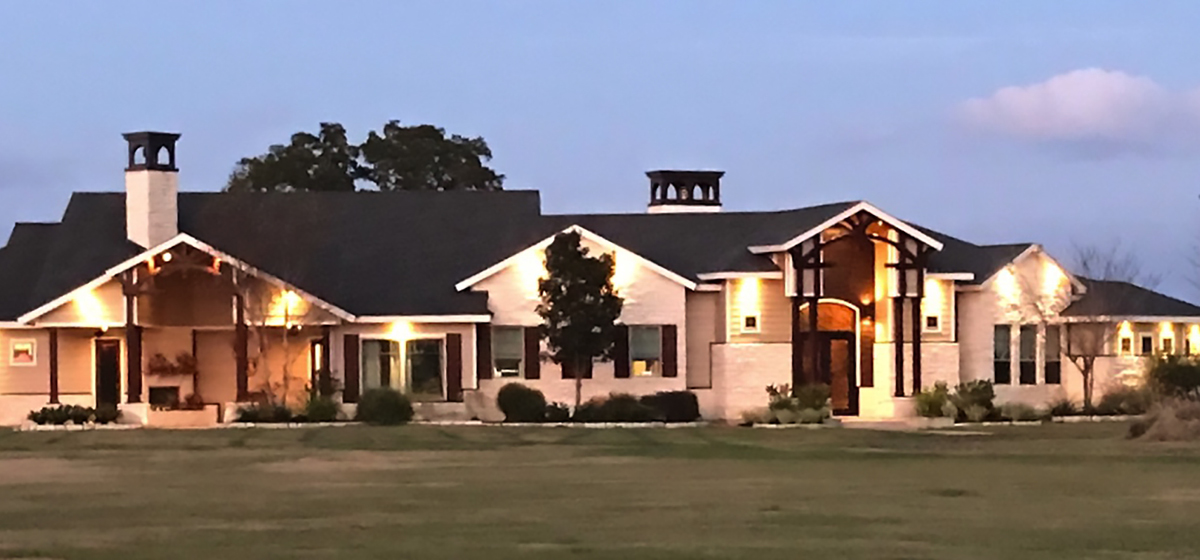Photos by Libby Rogers
Walker County Emergency Management Coordinator Butch Davis has had a distinguished career in law enforcement. This career started in 1968 as a patrolman with the Taft Police Department, Portland Police Department, and a deputy with the San Patricio County Sheriff’s Office. In 1970, he returned to Huntsville for employment with the Texas Department of Corrections, moving up to the rank of field major. In 1978, he received a special ranger commission by the Texas Department of Public Safety for the Texas & Southwestern Cattle Raisers Association. Six years later, he transferred to Huntsville with TSCRA. After 26 years with TSCRA, he retired in 2004. The following year, he accepted the position as chief deputy and emergency management coordinator at the Walker County Sheriff’s Office. In 2014, Davis assumed a fulltime position as emergency management coordinator for Walker County. He has deep roots in the community, remaining active as a lifetime member of the Walker County Fair Association and the Houston Livestock Show & Rodeo and an active member of Family Faith Church.
I came here in 1966 for the first time to attend Sam Houston State College. I returned in 1970 for employment with TDC. In 1984, as an employee of TSCRA, I returned to Huntsville for my home station, and I haven’t left.
I’ve lived nearly all over the state. I grew up in south Texas, near Corpus Christi. I went to Southwest Texas Junior College in Uvalde. I really liked Uvalde; I liked it for the ranching in that area. I also spent some time in Fort Worth with TSCRA, but Huntsville is home to me.
 You first came to SHSU more than fifty years ago. How has it changed over that time?
You first came to SHSU more than fifty years ago. How has it changed over that time?When I first came to SHSU in 1966, it looked a lot different. There was one blinking light between the courthouse and the main entrance to Sam Houston. The agriculture building where I first took classes isn’t there any longer. The building where I took biology is gone. The building in which I took criminal justice classes is gone. Bowers Stadium wasn’t here; we played football at Pritchett Field, and we played baseball at Holleman Field. The ROTC headquarters was in Austin Hall. It’s a very different campus now.
It was my Introduction to Criminal Justice course. The first paper I wrote in the class received the honor of being the top paper. I like to write, and I like to research. I guess that’s why I like emergency management.
I’m working on my 13th year as emergency management coordinator in Walker County. When I came in, our EOC [Emergency Operations Center] consisted of the training room at the sheriff’s office, and six phones that we could hook up in there with no computers. So, I started setting goals by listening to other EMCs and working closely with them. One of my goals was to have all the technology needed for an efficient Emergency Operations Center.
Well, my first computer for the Emergency Operations Center came from SHSU. I went to Mark Adams, the Vice President of IT at SHSU, and I told him, “Man, I need some computers.” He gave me some computers they were planning to put in surplus. That started our computer operations; then I started developing ham radio operations as a backup for communications. Walker County went from the VHF Radio to 700 MHz digital radio. I just started putting all of this together, but it was all stored in a closet. In the event of a disaster, we had to take all the equipment out of the closet and set it up, and this took about six hours. One of my goals was to have a standalone EOC, where emergency personnel could just come in and start operations. That’s what we’ve built here.
We needed a warehouse, because Walker County is a shelter hub. We had shelter supplies stored at Huntsville ISD. We had three containers behind the sheriff’s office, and stuff was just packed in them. Commissioners Court built a 50’x 50’ warehouse behind the sheriff’s office where shelter supplies are stored.
I just started setting goals and accomplishing these goals by working with the commissioner’s court and the county judge. Getting the standalone EOC accomplished my last goal. Now, we have set some additional goals, and I want to try to accomplish them in the next three and a half years.
 What are some of the hazards facing Walker County?
What are some of the hazards facing Walker County?There’s a lot of them. Take Memorial Day 2015; we had a major flood. In fact, Walker County was part of five separate federal disasters from Memorial Day 2015 through 2016. We had that first flood, then we jumped right into a 750 acre wildfire out on FM 980. The fire service and Texas A&M Forest Service saved 105 homes. Then two weeks later, we were back into a flood again. In 2011, we also had a very dry year, with over 6,000 acres burned.
We were working wildfires for months on end. We would usually get a little break, and I could sleep a little bit. Our whole team was there. I would usually send my deputy coordinator home. I’d give her about six or seven hours’ sleep. I’d sleep in my mobile command post whenever I could catch a nap.
There are lots of things. I never thought at my age that I would still be doing what I do, but I love my job—it’s exciting; it’s challenging. I went to nine different emergency management classes the first year. We are constantly going to classes and honing our skills. We must have at least three emergency management exercises a year, whether it is tabletop, functional, or full scale. I like the planning part and being on the planning team—putting it together, getting it out there. The biggest thing I like is helping the community—being there for them when they have problems, when everything is going down. I want to be there, to be that helping hand to get them back to normalcy.

In 2007, we started the Community Emergency Response Team (CERT). And by “we,” I mean it was a group effort. In my mind, any good team is a team that gets things done, and we have a good team here. The CERT members, 66 strong, recently helped with the Rocky Raccoon Race at the State Park (contests that involve 50 and 100 mile races), and the team was out there with our command post, assisting runners with injuries. They are a good, dedicated team. They have been involved in bike races, search & rescue missions, and other civic activities within Walker County.
Walker County was the first county in Texas to develop its own Animal Issues Committee. Our county government was the first to develop a Wildfire Protection Plan. Many counties have such plans now, but we were the first, and the Texas Forest Service recognized us for that accomplishment. We consistently look at how to make the county safer and how to be more prepared here in Walker County.
We’re here to serve the citizens of Walker County, and we use every technology we can. We have a Facebook page that has more than 9,000 likes. We post to that Facebook page daily to keep the citizens informed. They can ask us questions. Monday through Friday, they can call (936) 435-8740 and talk to our staff. After hours, for an emergency, they can call (936) 435-8001. I’m big on customer service. The customers are the citizens of Walker County, and we’re here to serve them.
Just communicate with us. We can fix many problems, but if we don’t know about a problem, there isn’t a lot we can do. Communication is a two-way street; we need feedback from the public to enable us to help them. If we all work as a team, we can get things accomplished. I like to use the word “we” instead of “I,” because “we” can do a lot. I can’t accomplish much alone.



